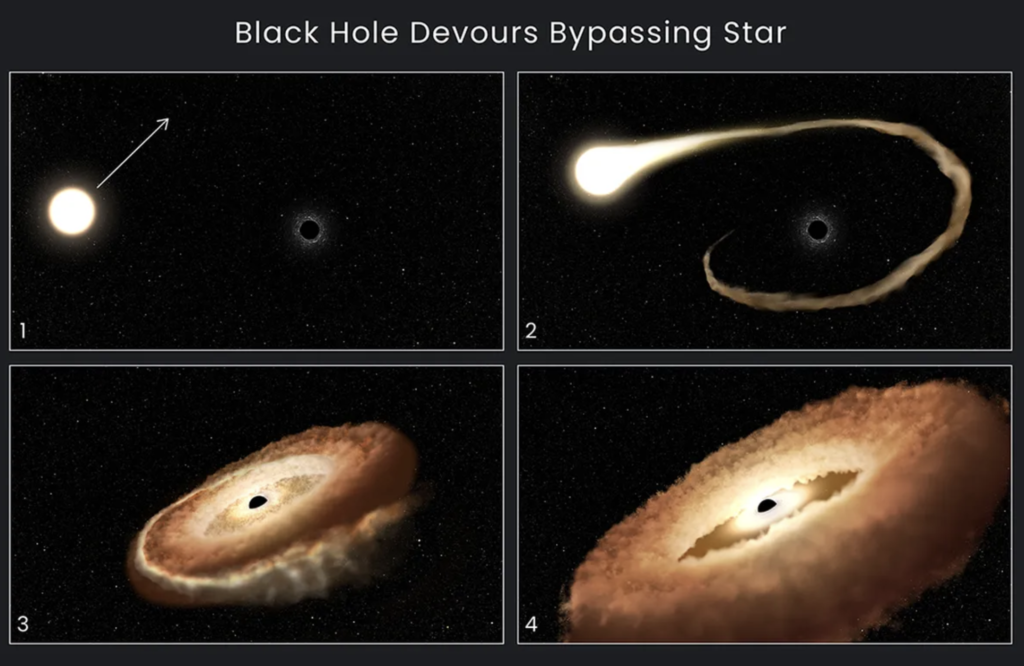Some stars go out with a big bang, exploding in a huge supernova. Others go out with a whimper, puffing up and throwing stuff away before shrinking and cooling to a small core. But very rarely, a black hole will rip a star apart and eat it. This is a much worse thing that can happen to a star.
In a galaxy with a dormant black hole at its centre, this kind of thing only happens a few times every 100,000 years, but the Hubble Space Telescope recently caught one of these events. Researchers watched the last few seconds of a star’s life after it got too close to a black hole 300 million light-years away and was eaten. This event, called AT2022dsb, was marked by a burst of light.
A star being torn apart by a black hole is called a “tidal disruption event,” and it is caused by the black hole’s strong gravitational pull. Huge black holes like these can be found at the centre of galaxies. If a star gets too close, it can pull layers of gas off of it. At some point, the star will be completely torn apart, and its pieces will be pulled into an accretion disc, which is a circle of matter around the black hole that feeds it.
At a meeting of the American Astronomical Society on Thursday, January 12th, Emily Engelthaler of the Harvard & Smithsonian Center for Astrophysics said, “Black holes eat in a very messy way.” “They’re eating this doughnut-shaped accretion disc from the inside. They’re eating too much and spewing out radiation as they do so, making this accretion disc puff up into a nice, big doughnut.”
Some of the radiation given off by these events shoots away in the form of jets, but this study focused on the radiation coming from the accretion disc itself. The scientists used Hubble to look at the ultraviolet light coming from the star. They used a method called spectroscopy to separate the light into its different wavelengths so they could see which ones had been absorbed. That lets them figure out what kinds of things were there and get hints about what is going on inside the bright, hot chaos around the black hole.
In a galaxy with a dormant black hole at its centre, this kind of thing only happens a few times every 100,000 years.
This doesn’t happen very often in the ultraviolet because this wavelength is easy to block, which makes it hard to get data on. The telescope had to be outside of the Earth’s atmosphere. “Ultraviolet can’t get through atmospheres very well, which is good for us but bad for observing. So we need to use a space telescope,” Engelthaler said.
Researchers wanted to know how the star and the black hole changed over time, so they made a series of observations over several months. They found that the temperatures in the disc dropped over time and that stellar winds blew away from the event and toward us at incredible speeds of 20 million miles per hour, or 3 percent the speed of light.
But the researchers’ collected spectra were not stable; they changed a lot over time. This could be because the source being looked at is so far away that the signal got lost in the noise. Or, the donut of matter around the black hole might have shrunk, and the amount of matter that the black hole pulled in might have gone down.
The researchers are still trying to figure out what all of the information they have gathered means. Peter Maksym, another researcher, said in a statement, “We’re still trying to figure out what happened.” “You tear up the star, and then it has all this stuff that falls into the black hole. So you have models that make you think you know what’s going on, and you also have what you actually see. Scientists are doing exciting work right at the edge of what is known and what is unknown.




